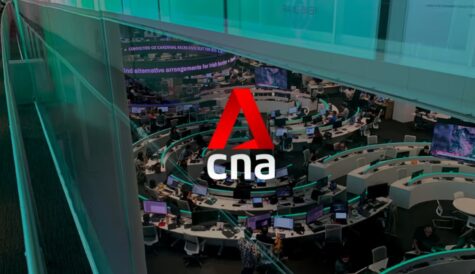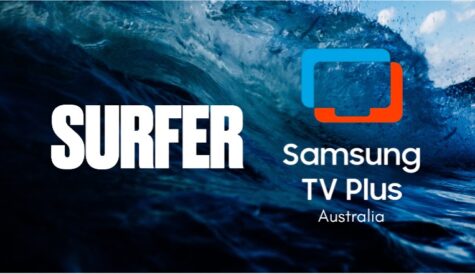
After more than 40 years of operation, DTVE is closing its doors and our website will no longer be updated daily. Thank you for all of your support.
The high life
HDTV is increasingly seen, even within Europe, as the de facto standard for pay-TV services. Andy Fry surveys recent developments.
 It’s been a long time coming, but HD channels have now moved into the pay-TV mainstream. While there is still a lot of variation in HD take-up from territory to territory, the last year has represented a critical phase with consumer demand for HD-ready TV sets and set top boxes growing rapidly.
It’s been a long time coming, but HD channels have now moved into the pay-TV mainstream. While there is still a lot of variation in HD take-up from territory to territory, the last year has represented a critical phase with consumer demand for HD-ready TV sets and set top boxes growing rapidly.
France is a good indicator of this trend. At the end of 2009, 45.4% of TV homes had at least one HD-ready television, up 15.3% on 2008. By 2012, consultancy NPA Conseil/Euroconsult expects that figure to rise to 78%. In the UK, meanwhile, pay-TV providers BSkyB and Virgin Media have seen revenues boosted by consumer take-up of HD services. Sky added 429,000 HD customers in the second quarter of this year, meaning that 30% of its 9.8 million-strong subscriber base now pay an extra £10 (€12) per month for HD channels. Virgin Media now has 1.2 million customers signed up to its 26 HD-channel package, contributing to a recession-beating 5% increase in its ARPU year-on-year. The US, UK and Japan, however, probably have the most advanced HD line-ups in the world, with US cable operator Comcast recently increasing its HD offering to 100 channels in parts of New Jersey (recent add-ons include Comedy Central, BET, Lifetime and MTV). But other leading economies are catching up fast. In recent months, German pay-TV provider Sky Deutschland and cable operator Kabel Deutschland have both put HD at the heart of their growth strategy. While the former has a total of 10 HD channels available via cable and satellite, the latter is poised to unveil HD versions of US-backed channels SyFy, TNT Serie and TNT Film this autumn.
With Scandinavia, Benelux, Poland, Latin America and the Asia-Pacific also experiencing an HD groundswell, it’s no surprise that channel operators other than those named above are anxious to enter the space too. Today, Discovery, National Geographic, MTV, Disney, AETN International and Eurosport, to name a few, all offer HD channels alongside their existing SD portfolios. Indeed, for some of the newer arrivals on the European pay-TV scene, there’s now a temptation to drop in an HD service first and add SD afterwards.
New lease of life
“In some territories there’s a kind of technology arms race going on.”
Ed Palluth, Rainbow Media
President of MGM Networks Worldwide Bruce Tuchman says his company now has six HD services in the international market. And he’s convinced it’s the way of the future: “We’ve seen from the US market that once consumers experience HD they don’t go back. The issue until now has been getting the pricing and the content right, but in markets where consumers have 50-60 HD channels they’re increasingly happy to stay within that universe and not watch SD at all.” For MGM, the advent of HD has been a new lease of life: “Our classic movies look amazing in HD,” he says, “But more than that, HD has been an opportunity for us to move up the consideration list. By getting into the market early we are giving platforms what they want and creating greater visibility among consumers. It’s almost like dialling back to the early years of multichannel television.” MGM’s HD deals to date have been in the US, UK, Poland, Israel, Brazil and, most recently, Spanish-speaking Latin America. Available via Cablevision Argentina, Cablevision Mexico and Sky Mexico, Tuchman believes this deal, in a market which was historically slow to embrace pay-TV, is further evidence of the speed at which HD is bedding down.
The dial-back effect is proving particularly valuable to US channel operators, many of which have access to native HD content from their domestic market (as opposed to SD content which has to be upconverted before it can be classified as HD). At MIPTV, for example, Scripps-owned Food Network announced plans to launch an HD version on Orbit-Showtime Network in the Middle East. Given that this launch came just a few months after the arrival of an SD version of Food Network in the UK and as a pan-regional feed in continental Europe, it’s a sign that newer players in the multichannel market see HD as an opportunity to leap ahead of rivals.
Commenting on Food Network’s rapid move into the HD market, Scripps Networks International president Greg Moyer confirms that “the ability to tap our substantial library of quality high-definition lifestyle programming is an important driver of distribution, especially in EMEA markets.” And the good news is that platforms are responding positively. Marc-Antoine d’Halluin, CEO of Orbit Showtime Network, says that “having Food Network on HD really marks us out as forerunners in the Middle East and North Africa, bringing programming the way they are meant to be watched – in high-definition – and we’re proud to be leading the way.”
Like MGM and Scripps, Rainbow Media is reveling in the opportunity offered by HD to promote channel brands such as Sundance Channel and We tv. “For us there’s an added advantage that our US parent company Cablevision has one of the world’s most advanced HD offerings,” says senior vice-president, international distribution, Ed Palluth. “We go to market with real understanding of the sector. For example we know from Cablevision research that the same show rates better in HD than in SD.”
Like other channel operators, Rainbow has taken Sundance into Poland. But a particular coup has been the channel’s entry into France via platforms including Numéricable, Free and Alice. “We benefit from having a lot of high-quality native HD production to offer the international market,” says Palluth, “and we are also able to leverage HD content from our other US channels AMC and IFC.”
HD offering
There’s no hard and fast rule about what a channel operator’s HD offering comprises For some, the answer has been to simulcast, while for others it has been to create a “best of” channel. An example of the former is NBC Universal’s launch of SyFy in Germany while the latter group includes MTVN HD, a combination of music, event, extreme sport and kids shows (HD versions of Nick content are shown at weekends). The final choice depends on a number of factors, says BBC Worldwide channels senior vice-president and general manager, EMEA, Ian McDonough, ranging from the availability of native HD content to bandwidth capacity issues (one of the practical limitations which prevents platforms from simply duplicating everything). “Our approach has been to create a single high quality BBC HD channel. It offers everything from documentaries like Planet Earth to dramas like Whitechapel and Hustle,” he says. This has proved popular with platforms, says McDonough, “because it appeals to a family audience, whereas a lot of early phase HD channels are geared more towards men. We’ve successfully taken it into markets like Scandinavia [Canal Digital] Turkey [Turksat] and Poland [various], where the sale of HD-ready TV sets is now outstripping the sale of traditional receivers.”
AETN International has gone down both routes with its History, Bio and Crime brands “depending on the individual market,” says AETN International’s senior vice-president Sean Cohan. “Sometimes the decision whether to simulcast or launch a differentiated service is about the economics, sometimes it’s about the rights. But just as often it’s about local audience tastes or the promotional needs of the platform. In the UK, for example, Sky charges an HD premium, so it makes sense to offer viewers different editorial.”
Of course, this growing surge of activity around HD raises a whole host of commercial considerations. For example, with most channel chiefs predicting HD ubiquity at some point in the future, with HD replacing SD as the de facto standard, does it mean that all of them should be rushing HD channels to market? Does failure to act mean in obsolescence in the future?
[icitspot id=”9284″ template=”box-story”]
Cohan, who has seen shifts in behaviour on the US side, is cautious on this point: “I can see that 2011 might be a good year for HD if the global economy comes out of recession. But you have to keep in mind that there are still a lot of people who haven’t made the switch to HD. I don’t think we can quite say the tipping point has been reached for HD.”
This point is echoed by Chellomedia’s chief operating officer Niall Curran, whose company runs a diverse portfolio of local and pan-regional channels. “How quickly you move is really down to a combination of market conditions and the kind of channels you operate,” he says. “HD represents quite an investment, so you want to make sure you’re getting into a significant number of homes when you sign a carriage deal. How quickly you act also depends on whether your channel is the service that will help the platform market its HD offering to customers. Often this is a discussion with the platforms.”
There’s no question, for example, that blue-chip brands like Discovery HD, National Geographic Channel HD and MTVN HD are regarded as must-haves for most platforms. Starting in 2006, Discovery HD has rolled out across many of the major markets in the world, most recently linking up with cable operators Virgin Media in the UK and Zon Multimédia in Portugal in June. Prior to that, the majority of Discovery HD’s deals were with satellite platforms, so the fact that cable players are ramping up their HD offerings is further evidence of a new phase in the rollout of the format. This point is also underlined by MTVN HD’s deals, which include carriage agreements with Deutsche Telekom’s German IPTV platform T-Entertain, Hungarian DTH operation Hello HD, UK cable operator Virgin Media and Russian DTH outfit Platforma.
Chellomedia’s portfolio also illustrates the point. While a pan-regional Chellomedia channel like Reality TV is not likely to get HD early-adopters trading up their television set or paying a subscription premium, a service like Central European documentary channel Spektrum might. Available to 3.6 million homes across markets such as Hungary, the Czech Republic and Slovakia, Chellomedia decided that it did make sense to go HD in this rapidly-growing region, says Curran. “For us, the critical business decision has been to invest in our own architecture so we are completely equipped to deal with HD internally,” he says. “But the decision about when to go to market with an HD channel is dependent on market conditions. Our view is that it is dangerous to race ahead of the customer, particularly with channels which are based around the acquisition of third party rights. But it felt like the right time for Spektrum HD.”
 Chellomedia has taken a similar decision with Mov, a male-oriented action/horror movie channel it runs in partnership with Portuguese platform Zon Multimédia. Even more compelling was the case for going HD with Film1, its premium movie service in the Netherlands. Film1, and its accompanying channel portfolio, is the main provider of box office movies in Holland, and was a very early adopter of HD, says channel chief Casper Keller says: “It was expensive at first because so much content had to be upconverted from SD, but it was a way for us to gain experience in the market and offer our platform partners a point of differentiation with customers.” Like his US counterparts, Keller says there is no going back once consumers experience HD. “We simulcast Film1 in SD and HD, and we know that, given the choice, audiences watch the HD version.” Interestingly, Film1 does not charge its subscribers a premium for watching the HD version of the channel. Contrast that with the UK where Sky has managed to bolt on an extra £10 (e12) a month for giving its subscribers access to its HD bouquet. This raises an obvious question. Does HD represent a potential revenue boost for channels and platforms? Or does the ability to charge disappear as HD becomes universal? “Eventually, HD becomes the new SD,” says Keller, “in the way analogue was replaced by digital. But there are a variety of factors that will influence the speed of that transition. So during that period there will be some platforms which can charge customers extra.”
Chellomedia has taken a similar decision with Mov, a male-oriented action/horror movie channel it runs in partnership with Portuguese platform Zon Multimédia. Even more compelling was the case for going HD with Film1, its premium movie service in the Netherlands. Film1, and its accompanying channel portfolio, is the main provider of box office movies in Holland, and was a very early adopter of HD, says channel chief Casper Keller says: “It was expensive at first because so much content had to be upconverted from SD, but it was a way for us to gain experience in the market and offer our platform partners a point of differentiation with customers.” Like his US counterparts, Keller says there is no going back once consumers experience HD. “We simulcast Film1 in SD and HD, and we know that, given the choice, audiences watch the HD version.” Interestingly, Film1 does not charge its subscribers a premium for watching the HD version of the channel. Contrast that with the UK where Sky has managed to bolt on an extra £10 (e12) a month for giving its subscribers access to its HD bouquet. This raises an obvious question. Does HD represent a potential revenue boost for channels and platforms? Or does the ability to charge disappear as HD becomes universal? “Eventually, HD becomes the new SD,” says Keller, “in the way analogue was replaced by digital. But there are a variety of factors that will influence the speed of that transition. So during that period there will be some platforms which can charge customers extra.”
Level of competition
One obvious factor is the level of competition within markets: “In some territories there’s a kind of technology arms race going on,” says Rainbow Media’s Palluth. “In a market like Poland, where you have numerous platforms using HD and VOD to try and secure a competitive advantage, it’s tough to secure the kind of price premium that Sky gets.”
Similarly, in the crowded Scandinavian market, HDTV was once seen as a USP for satellite operators. But with cable, DTT and IPTV platforms all encroaching on the space, there’s an inevitable downward pressure on pricing, says BBC Worldwide’s McDonough: “Here you have some HD channels available on basic, which is very different to the situation in the UK. Rather than pushing up prices, HD becomes a way of controlling churn.”
The prospect of HD channels populating the basic tier is made ever more likely now that free-to-air channels are entering both the pay-TV and the DTT space. The same is true for brands like Eurosport, a business whose ethos is built around maximising subscriptions on the basic tier. While the early phase of rollout has seen Eurosport HD sitting within designated HD sections of the EPG, the likelihood is that the channel will be at the forefront of the trend towards HD channels in basic. In the Nordic region, Eurosport general manager Amanda Evans says the arrival of an HD service in basic has been warmly welcomed by platforms looking for a competitive edge: “HD penetration here is high,” says Evans, “so the platforms have welcomed the chance to populate the basic tier with HD versions of established brands.”
Of course, one noticeable development in the last six months has been the way set manufacturers and platforms have started talking up 3D. That sounds exciting for consumers, but surely it’s a distraction for channel operators that have only just started to see light at the end of the HD tunnel. Executives including Cohan are philosophical: “The pace of change is ever greater, but that’s the reality of the business and what makes it so interesting. Our view is that HD is real and happening now. 3D is a little further down the line and is probably more suited to event TV.”
[icitspot id=”9283″ template=”box-story”]
As with HD, the speed at which channel operators move into the 3D space will be dictated to a large extent by content supply and demand, says Rainbow Media’s Palluth: “The Sundance Channel is mainly built around independent films made on fairly tight budgets, so I don’t anticipate it being a consideration for the channel in the near future.”
David Pounds, chief executive of programme distributor Electric sky, provides a useful insight into the state of the 3D content market: “We were one of the first companies to start looking at the 3D market from a content sales point of view. At MIPCOM last year, there were four or five channels showing interest in the area. This year, I’d expect it to be more like 40 or 50, which shows how quickly excitement has built in the area.”
An interesting footnote is that US cable giant Comcast’s decision to deliver 100 HD channels, double the previous offering, is putting pressure on the operator to reduce its analogue tier to free up bandwidth. Subscribers to Comcast’s expanded basic tier have been told to install a digital box or risk losing channels. The message is that HD is on the cusp of pushing SD channels to one side.


